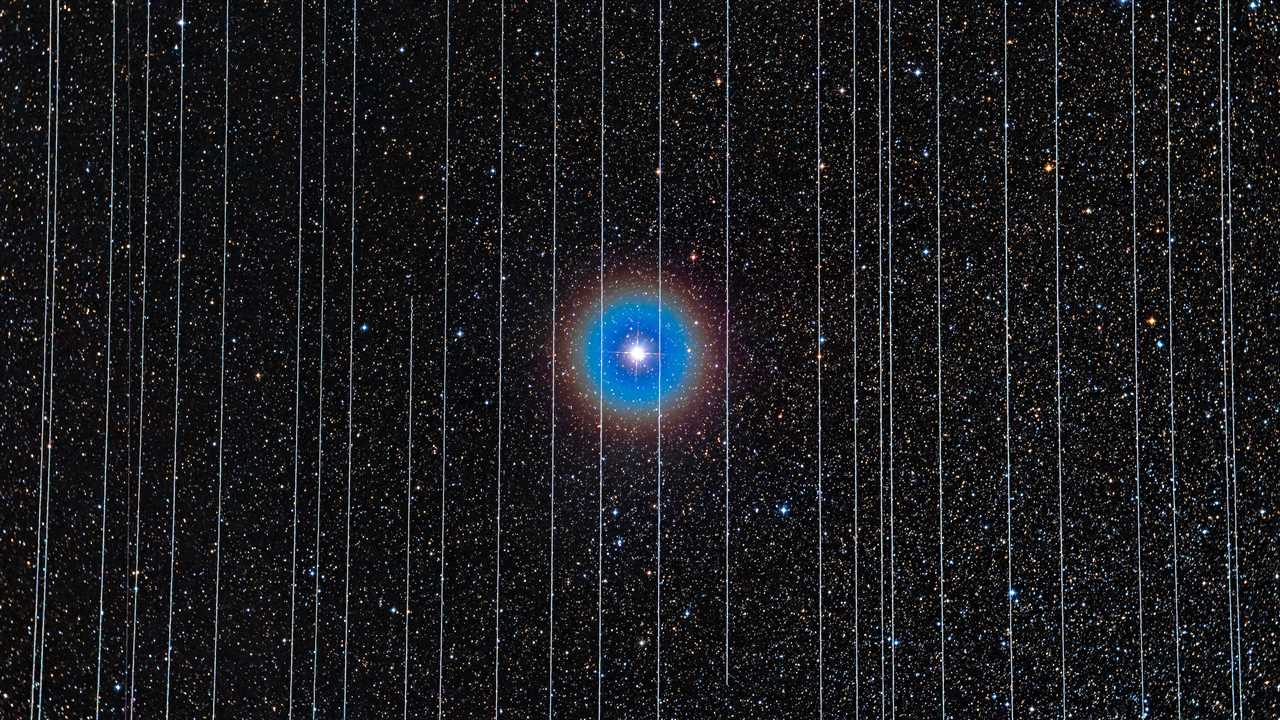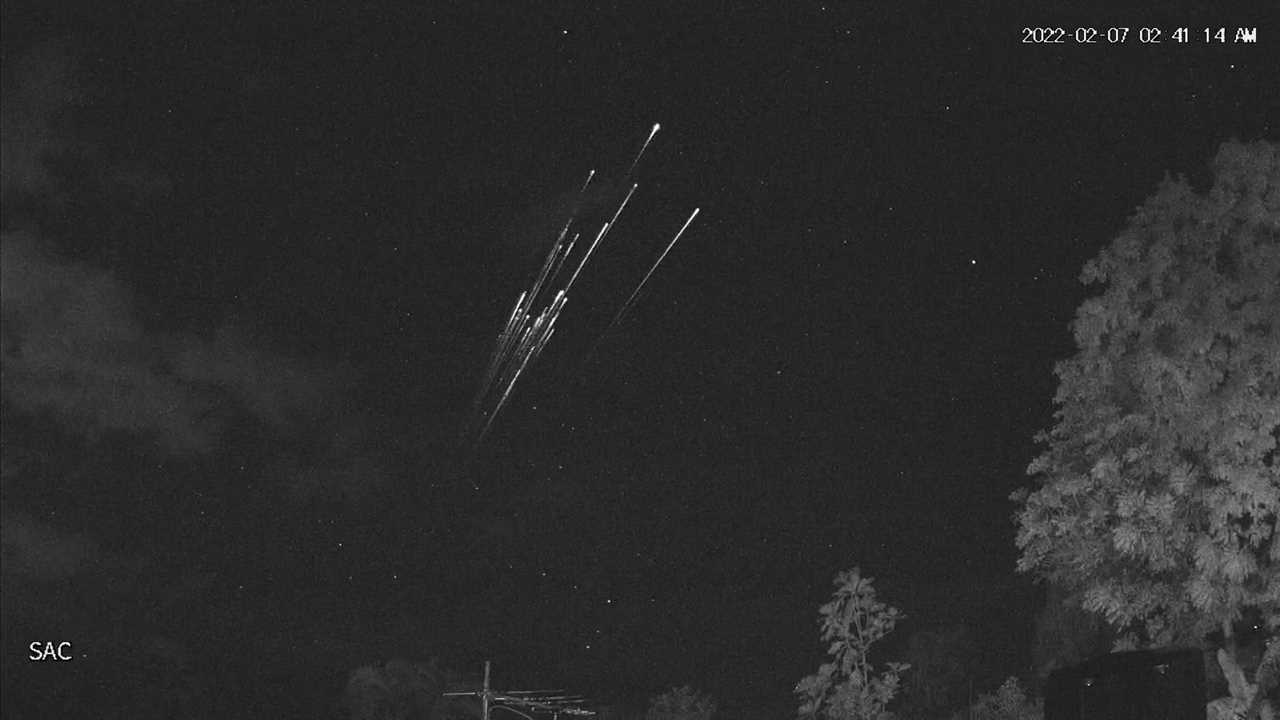
Each night, the stars of the sky compete with thousands of satellites. The number of intruders is only growing as constellations of satellites proliferate, with companies planning to launch orbiters by the tens of thousands to transmit internet and other communications signals back to Earth. Among them are SpaceX, which has already launched thousands of Starlink satellites, and Amazon, which plans to begin its Project Kuiper constellation later this year.
For astronomers studying the universe from the surface of our world, this is a mounting problem.
“It’s a hot topic,” Eric Burns, an astronomer at Louisiana State University. “We’re dealing with numbers of satellites so great that they are limiting the sensitivity of ground-based telescopes.”
Many astronomers have lodged strong criticisms of the current and future effects of satellite constellations on their studies. But Dr. Burns and other scientists are thinking about making cosmic lemonade out of orbital lemons. What if, they ask, all those interfering satellites could help advance the field of astronomy as they expand access on the ground to satellite signals?
What these astronomers see is the potential for a new type of telescope that mega-constellations could provide. In a forthcoming proposal that Dr. Burns and his colleagues intend to share with private companies building satellite constellations, they hope that thousands of tiny gamma-ray detectors can hitch a ride into space with the satellites. Taken alone, each individual detector would be weak. But operating together inside a mega-constellation of many thousands of satellites, the power of such a system would rival Swift and Fermi, two gamma-ray observatories in space that are managed by NASA.
The impact would be significant. Gamma-ray bursts are the hallmark of the universe’s most catastrophic events since the Big Bang. Deepening research into the phenomena could help answer today’s grandest questions, such as what makes up the cores of neutron stars or how the behavior of dark energy could reveal the shape of the universe.
“These are about as important a set of questions as can be asked in astronomy,” Dr. Burns said. “We will be able to treat the thousands of gamma-ray detectors as a single, extremely powerful coherent telescope looking all over the universe, which would be more sensitive than anything done before.”
The idea is not without precedent. In 2011, Iridium Communications worked with scientists to piggyback research instruments into space. Around 30 Iridium satellites — which typically beam voice and data communications down to Earth — also host dosimeters that measure radiation in low Earth orbit under the REACH program, a collaboration between the United States Air Force and scientists.
And all of Iridium’s 60-plus satellites carry magnetometers for the AMPERE program, run by the Johns Hopkins Applied Physics Laboratory, which studies how energy enters the Earth’s ionosphere from its magnetosphere.
Alexa Halford, an associate lab chief at NASA’s Goddard Space Flight Center, says the Iridium readings are an important source of radiation data. Her work uncovers the connection between Earth’s magnetosphere and its atmosphere and how the two work together to shield the ground from showers of strong radiation from space.
Dr. Halford said that the ways in which satellite mega-constellations interfere with telescopes on Earth’s surface needed more consideration.
“Ground-based astronomy is incredibly important, and we need to be responsible,” she said.
On the other hand, she sees great potential from putting scientific instruments on more satellites.
“More data can give us a more complete picture,” Dr. Halford said. “I’d have a hard time saying no.”
SpaceX is already sharing some data with scientists in an arrangement that could benefit both parties.
Tzu-Wei Fang, a scientist at the National Oceanic and Atmospheric Administration who specializes in predicting space weather, began collaborating with SpaceX after a disastrous launch in February 2022. SpaceX watched as 38 of its 49 newly deployed Starlink satellites burst into flames.
Dr. Fang’s post-mortem documented how a minor geomagnetic storm had raised the density of the air at the altitudes where low-Earth orbits take place. So instead of sailing into orbit, the Starlink satellites smacked into dense, hot air and broke apart.
“No one can do low-Earth orbit drag very well right now because we don’t have the right satellites,” she said.

After that incident, SpaceX agreed to share the positioning and velocity data for its approximately 4,000 Starlink satellites for a year, giving Dr. Fang and her colleagues the opportunity to study the type of orbital drag that had destroyed the satellites. That could potentially lead to better space weather predictions, giving satellites more time to react to a surge in air density by rising to a safer orbital altitude, “which will ultimately benefit everybody,” Dr. Fang said.
Getting scientifically useful data from satellite constellations presents technical hurdles. Satellites in low-Earth orbit move very fast, completing an entire orbital circuit in around 90 minutes. So combining data from a constellation of many satellites isn’t easy.
And in order for scientific equipment to ride along into orbit, there are strict limitations. Low-Earth-orbit communications satellites, like SpaceX’s Starlink, have short life spans of about five years, so the detectors would have to be inexpensive. By contrast, the Hubble Space Telescope cost around $16 billion in today’s dollars but is expected to last around 40 years.
Any additions couldn’t just be tacked on at the last minute. Satellite engineers would need to modify their designs to accommodate the new payloads with upgrades such as bigger power sources and data links.
None of the companies that are building enormous satellite constellations have said they would be willing to deploy gamma-ray detectors or other new sensors that would help scientists. When asked for comment on the idea, SpaceX declined to reply, and OneWeb, which recently completed another, smaller constellation, never responded. Project Kuiper, the constellation from the online retailer Amazon that may launch its first satellites later this year, said it had invited Dr. Burns to submit his proposal.
Dr. Halford suggested that increasing the number of partnerships with the constellation operators was a way to benefit everyone without cluttering the sky even further. “That’s not a great answer, but I think it’s the best we have,” she said.
So far, the burden of individually negotiating with hesitant companies like SpaceX has frustrated astronomers. Dr. Burns thinks it might be time for government oversight to ensure minimal harm to science from mega-constellations.
With greater participation, Dr. Burns hopes scientists and satellite makers can learn to work together. “I do think this idea of science instruments on the mega-constellations themselves would be a benefit on both sides,” he said. “If they’re open to it, it’s an even greater solution.”
Did you miss our previous article...
https://trendinginthenews.com/tech-giants/google-devising-radical-search-changes-to-beat-back-ai-rivals






